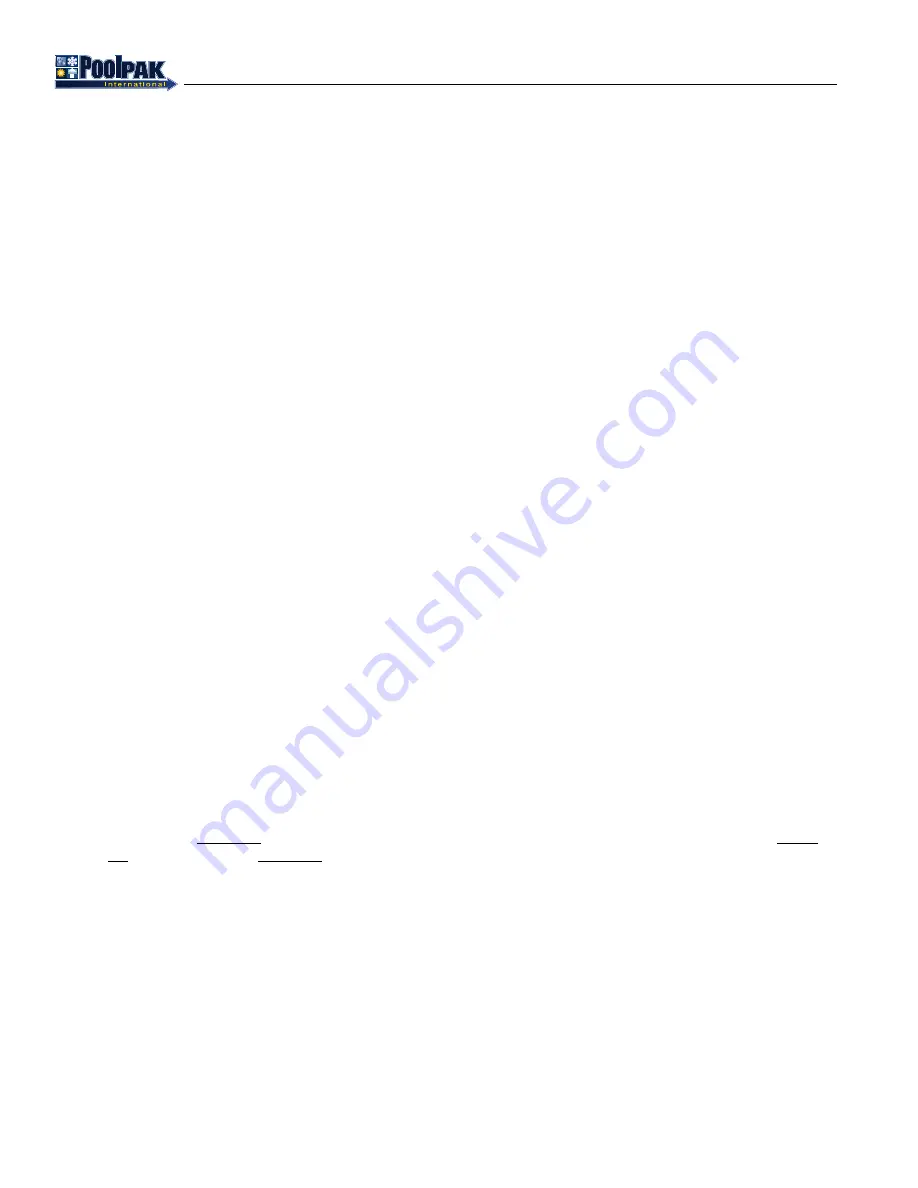
4
EGW06-PCPEG-20140813
TM
TM
HYBRIDS
•
Combines various technologies to increase efficiency and capability
•
Utilizes ventilation as primary dehumidification method
•
Switches to heat pump method when conditions require better environmental control
OTHER TECHNOLOGIES
Desiccant technology can be adapted to provide super dry air which is injected into the poolroom to dilute the moisture
load. The regeneration phase of the desiccant is typically driven by waste heat from refrigeration cycle or other fossil
fuel.
Wheels are sometimes considered because of their wide acceptance as heat recovery devices. Latent or Enthalpy wheels
are not suitable for pools, but sensible wheels may have application.
ROOM AIR DISTRIBUTION
All PoolPak™ models provide continuous air recirculation, and with a good air distribution system, will promote
uniform space conditions. To remove the required moisture and maintain controlled conditions, it is essential that there
be adequate air movement and distribution in the natatorium. The unit must remove the humid air from the pool area
and discharge the dehumidified air back into it. The supply air should be distributed over areas subject to condensation
(windows, outside walls, support trusses, skylights, etc.).
AIRSIDE DESIGN
The supply air volume and external static pressure capability of the fan is given for each model in the Performance
Section. It is recommended that an experienced engineering or mechanical contracting firm do the design, sizing and
layout of the duct system.
The recommended volume of supply air should provide three to eight air changes an hour. However, in larger waterparks
or spaces with high sensible heat gain, higher airflows may be appropriate. Lower air volumes require more care to avoid
short cycling the air between the return and supply, air stratification and pockets of high humidity.
The most even control of space conditions occurs with proper air distribution and a proper air flow rate. This provides
space control without excessive loading and unloading of refrigerant-based dehumidification equipment.
Supply Air
After dehumidification, dry air is supplied back to the room. Supply air should be distributed from ducting around the
) of the space. The two options for perimeter supply air distribution are overhead (see
).
Section I: Indoor Pool Design











































